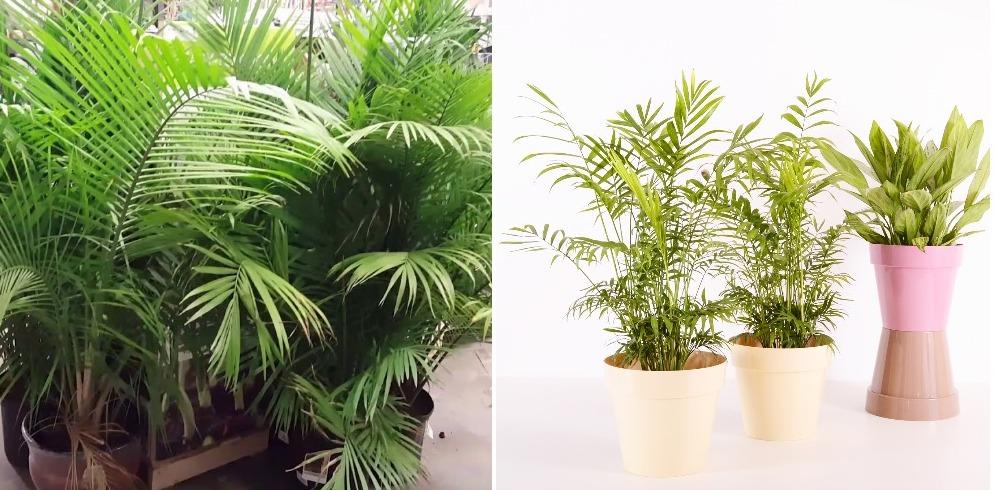“A beautiful plant is like having a friend around the house,” says Beth Ditto but the question is, “is it really true?” Better ask plant keepers and if you are not one then consider being one.
When we talk about home decor, indoor plants are very popular, palm plants being on the highest rankings. They are used not just for home decoration purposes but also for working spaces like offices, gyms, etc, and surprisingly this is not all because people have started using indoor palm plants widely for setting up backdrops for photography and videography too.
Talking about peace and calm? Yes, they can do that as well. Getting annoying but at the same time amusing, right? Indoor palm plants directly or indirectly provide a sort of relaxation and peace may be because of their association with the tropical environments, another reason for their immense popularity.
If you have the idea that houseplants are just decorative ornaments for a house or a room, you might be mistaken because indoor plants are not just about home decor but very much more than that. They are an inspiration to the plant keeper; they work as a quiet friend who is always there for you when you need to vent out without throwing the looks of judgment.
If this does not spark interest and joy for indoor palm plants in you, then do not know what can? Check out all the listed indoor palm plant types and their care routines down in further sections.
Indoor Palm Plants- Types
Areca Palm

Also called Dypsis lutescens, and widely known as golden cane palm, areca palm, yellow palm, or butterfly palm, is a species of a flowering plant. It is famous for having fronds and grows up to a height of 8 feet tall.
Mainly used for large spaces for creating an eye-catching look, Areca indoor palm plants become a focal point for such places. Receptions of large centers use Dypsis for enhancing the look creating welcome vibes all around.
Parlor Palm
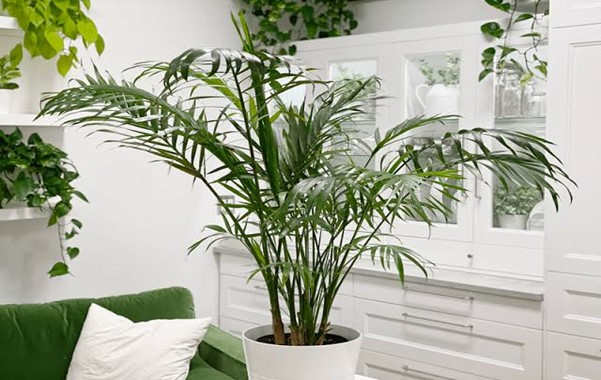
Sharing another name of Chamaedorea Elegans, these kinds grow very well indoors. They grow patiently and reach at about 3 feet when fully grown while also producing flowers.
As the name suggests, Parlor palms are such indoor palm plants that are used specifically for placing inside the walls.
Chinese Fan Palm

Also known as Livistona Chinensis, Chinese Fan Palms are the most unique in the category of indoor palm plants. The reason being their star-shaped leaves.
The Chinese Fan Palm can reach a height of 15 feet after growing fully mature. Hence, they are worth trying out for larger and posh areas.
Sentry Palm
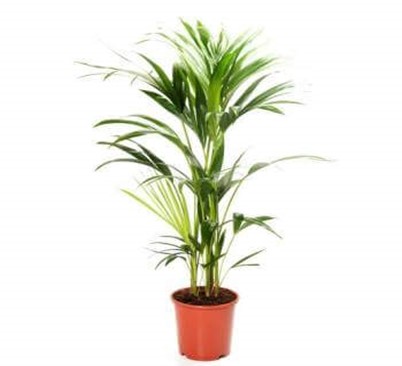
Sentry Palm is known for having wide leaves and having deep arches. Their deep arches perhaps give them the name of curly palm.
Sentry Palm is said to be like Kentia forsteriana, another type of indoor palm plant. Although they can be differentiated with the arches. Sentry palm arch more than Kentia. A popular choice for setting in hallways and wide rooms, Sentry’s palms give out a magnificent look if used for interior decorating.
Kentia Palm
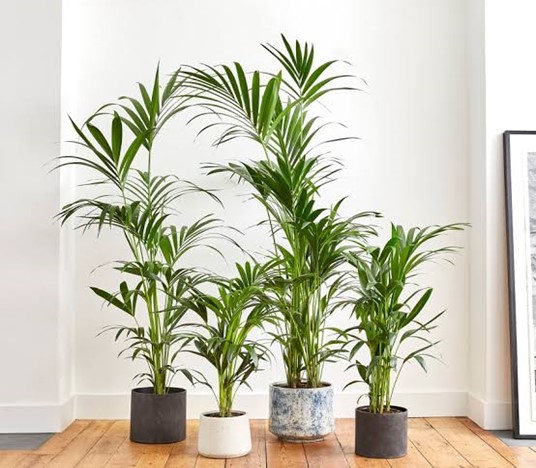
Already mentioned as the brother of Sentry Palm, Kentia Palm is also known as Howea Forsteriana.
Kentia Palm looks like Sentry Palm, the difference being their leaves do not arch as much as Sentry Palm. It has fronds and grows up to afoot. They give an exotic and lush look to the place they are set at.
Pygmy Date
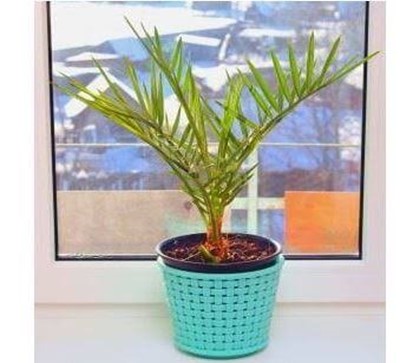
Phoenix Roebelenii is a unique name that Pygmy Date carries additionally. Because of its small size, it is also called miniature date or dwarf plant.
It is greatly used in homes because of its height, that is it grows to 3 feet. It is easy to manage and looks good when used for decoration purposes. It also provides calming properties. When compared to other indoor palm plants, Pygmy Date has slimmer leaves.
European Fan
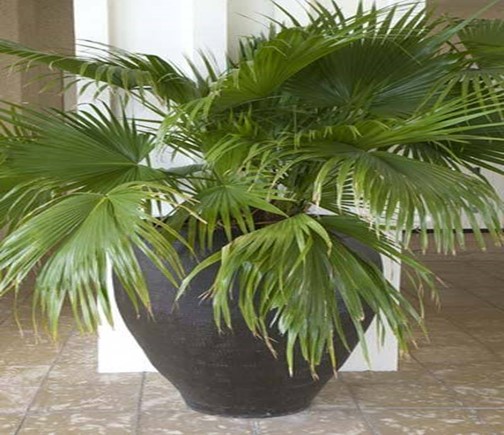
Chamaerops Humilis is another type of fan plant falling under the category of indoor palm plants. They are famous because they grow more easily than other fan-type plants.
They have a stem at the base and the leaves grow slightly above that. European Fan develops fronds which, then look like a fan. Hence, they are named European Fan Palm. They look quite beautiful when fully matured.
Lady Palm

Also called Rhapis Excelsa, Lady’s palm, as the name suggests, are more kind of feminine plants. They look appealing because of their structure.
These are the plants used for still life, backdrops, professional settings, etc. mostly which can be another reason you could consider them for decorating your place.
Sago Palm

The name says that the Sago is a palm plant but let not the name fool you.
Sago Palm, also known as Cycas Revoluta, is rather not a palm but looks like it. Therefore, falls under the category of indoor palm plants.
Think twice before buying a Sago palm plant if you have got pets in your house. Growing about 2 feet tall, this plant is highly toxic if accidentally ingested would eventually end up causing death.
Canary Island Date Palm
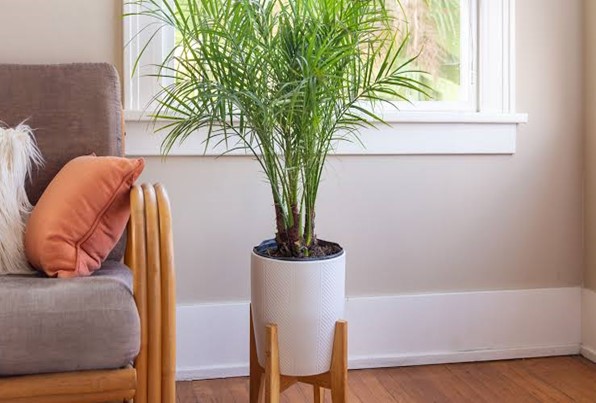
Of course, as the name suggests, Canary Island Date Palm is somewhat like Pygmy date (Phoenix roebelenii) also called Phoenix Canariensis.
These palm plants can grow up to 6 feet if kept indoors, and to 20 meters if kept outside. They have stiff straight and narrow-width leaves and work wonders when kept inside a container. You can use these plants on the balcony of your house rather than placing them inside a room as they enjoy that sort of atmosphere more.
Yucca Palm

With the botanical name, Yucca aloifolia, Yucca palm is also called Yucca elephantipes. It is generally planted outdoors because it has razor-sharp leaves but can be used at homes in balconies or hallways.
People use these plants for security reasons outside their house doors or near the windows, so it becomes hard for anyone trying to break in without getting cuts.
Ponytail Palm
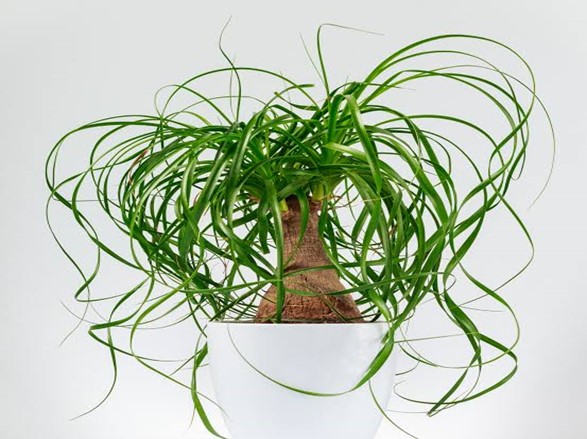
With too many indoor palm plants belonging to large indoor spaces, the Ponytail palm plant is the type belonging to small areas.
It is like a Sago palm plant, which is not a real palm plant being a succulent. It has a thick, fat trunk from the top of which the leaves sprout out and fall just like a ponytail, giving it the name of Ponytail palm plant. Place it inside a beautiful pot and it is all set to give out a tropical look to your tabletop.
Indoor Palm Plants – Care
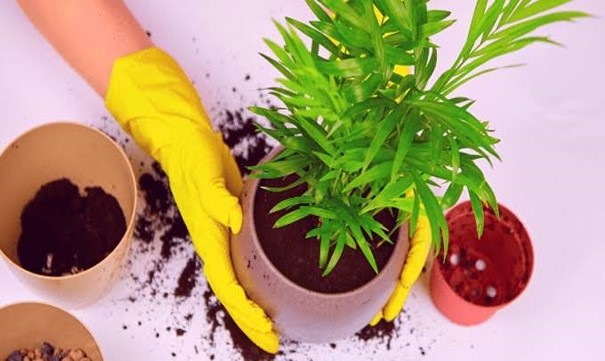
Caring for plants is a lovely hobby. It is too inspiring for many people. Some researchers state that people who spend time with plants or take care of them become stronger mentally than before.
If you live alone or are looking for a new hobby, adopting some plants and starting to take care of them can be a good option. No matter if you do not have a garden to do so, you can choose some indoor palm plants as starting points. They are not just easy to manage but also have soothing properties. They also make the surrounding environment healthier and less toxic.
Spending time with plants is better than spending it elsewhere on useless and time-eating things such as sticking up with your phone which harms your health. You can also use this suggestion as a phone addiction remedy.
Areca Palm
Areca plants should be potted in such a soil mix where it can be allowed a well-draining system. Using the mixture of one part peat, one part pine bark, and one part coarse sand can be suitable for this plant.
Temperatures above 55°F (12.7°C) are possibly good for the survival of Areca palm. Place the plant in a moderately bright room where there is no sun directly. Too much sunlight can burn the leaves while too little sunlight would result in slow growth.
Do not overwater the plant. Let the topsoil be dry during watering intervals. Use fertilizer during summer and spring, standard one would do.
Parlor Palm
Parlor palms can grow well in indirect or artificial light. Hence, avoiding direct sun might be favorable. These plants can survive in more than average humidity but will have spider mites’ problems in case of dry conditions.
They are quite easy to manage as they do not require regular checks. You can just occasionally check upon them and clean any dead branches.
Water these plants regularly, that is they require uniformly moist soil. Do not overwater or else they will die.
Chinese Fan Palm
These plants support bright sunlight but indirectly. Immature plants favor shady locations. Consider changing places once they are grown.
Watering is not required on a regular basis. Water the plants when the topsoil seems dry. Use fertilizer only during spring.
Sentry Palm
Sentry palm plants favor room temperatures of around 65°f / 16°c — 75°f / 24°c. You can feed them in direct sunlight. Water the plant when the soil feels dry enough. Such plants grow well in above-average humid places.
Use the soil, which is good for drainage, perhaps half sand and half perlite. Use a pot with such soil so that the plant can drain excess water. Consider feeding the fertilizer every month.
Kentia Palm
Unlike other indoor palm plants, Kentia manages to grow well in dimly lit spaces. They are happy in room temperatures of around 65°f / 16°c — 75°f / 24°c.
Watering Kentia palm depends on the seasons. During winters, water it less and allow the soil to dry a little, while in summers, water the plant when the soil feels dry.
Use half sand soil for allowing good drainage for the plant. Such plants feel pleased in humid conditions.
Pygmy Date
Indoor Pygmy plants prefer temperatures like 65°f / 16°c — 75°f / 24°c. They grow well in light which is a mixture of shade and sunlight.
Watering when the plant’s soil feels a bit dry can be done during summers and spring. Avoid overwatering the plant because that would eventually kill the plant.
Put the plant in a pot containing soil that is peat-based. Prefer to use a fine drainage system for the plant to grow well.
European Fan
These are slightly different from the above-mentioned indoor palm plants because they grow quite well in average room temperatures. It would even survive at 40ºF (4ºC).
European fans do well when they meet bright light. Too much sunlight can harm the plant so try giving both light and shade during the day.
Try to keep the topsoil moist by watering the plant frequently. Once done, let the plant dry a bit before another session of watering. Feed fertilizer during summer and spring.
Lady Palm
Lady palm will easily survive temperatures from 20-100°F (-6-37°C). Keep the plant happy by giving indirect sunlight. Keep in mind that direct sunlight might severely harm the plant.
This plant requires all time moist soil but never fully drenched one. Standing water should not get collected as it will destroy the root system.
Lady palm can grow in various types of soil but the one that is the most favored by it is African Violet potting soil. Fertilizers are hardly in requirement of this plant but give it a feed rarely; avoid over-fertilizing in such cases.
Sago Palm
The temperature which is best suited for a Sago palm plant is average room temperature of 65°F (16°C) — 75°F (24°C). The light favored is as usual the indirect sunlight which is common among indoor palm plants.
Sago plants enjoy moist soil but water it less during summers. Also, do not overwater as it will kill the plant. When the topsoil looks dry, take the cue and water the plant.
Many plantings guide state that a well-draining and aerated potting mix is needed such as 1-part peat, 1 part pine bark, and 1-part coarse sand is a suitable mix.
The plant does not need too much fertilizer. Therefore, use is rarely.
Canary Island Date Palm
Canary Island Date Palm plants love the
temperatures from 20-100°F (-6-37°C) but could also tolerate a short duration outside this specific temperature zone.
Place your plant in an area where both shade and sunlight are present. Water the plant at long intervals as the indoor palm plant is highly at risk of dying if overwatered.
Many guides suggest that a peat-based potting mix with good drainage is best to use. Two parts peat and one perlite or sand are good to be used.
These plants require more nutrients than other indoor palm plants as they are very sensitive to the environment. Use fertilizers for these plants finely. Average room humidity is what these plants are good to live in.
Yucca Palm
The Yucca palm plant is highly tolerant to full sunlight but also demands some shade. Watering of the plant must be done when the soil seems to be dried fully. Refrain from too much watering the plant.
The Yucca plants are supposed to be outdoors but can be kept indoors as well. They have unique properties than other indoor palm plants. One of their unique characteristics is that they are edible, being the leaves an incredible source of Vitamin C.
Ponytail Palm
These types of indoor palm plants demand full indirect sunlight. Therefore, it will help them grow if you keep them in such a location where there is abundant indirect sunlight available.
They do not require everyday watering. You can water them once or twice a week to support their growth. Refrain from overwatering.
What to Remember Before Buying?
Height
Height is a factor that needs to be considered before buying the plants. Indoor palm plants can grow upto heights of 3-9 feet tall. Therefore, if you are thinking of buying one, already know the average mature height of the type you are going to buy.
Price
Palm plants are too popular to be cheap these days. They are widely used for decorating purposes which comes with drilling holes in your pockets. So, finding a good store that provides good quality plants at reasonable rates is important.
Insects and Bugs
You should already know that if you are bringing plants into your homes, insects and bugs will have a stay simultaneously. Therefore, you should have a plan to get rid of these in advance. Using insecticides and other methods can help in getting rid of the problem.
Repotting of The Plants
People often get confused about this step of keeping plants. It is not mandatory to re-pot them very often. Most plants are good to stay where they already are. Changing pots should be done only when necessary. Read about the plant you are going to befriend before buying it, so you can take care of it properly.
Lighting
Lighting is an important factor to consider before bringing home those indoor palm plants. If your place does not have sufficient lighting which is required or favored by those plants, you will be buying them just to kill them. You can create such a space where enough sunlight and shade are available to home those indoor palm plants.
Conclusion
Adoption and caring for plants are good ways to spend time and get to know about new things. We reckon that this wholesome guide including most of the types of indoor palm plants and the ways to care for them proves to be helpful for you if you are considering or planning to bring some of the indoor palm plants home.
Also, it is advisable to know everything in detail about the plant you would like to house. Hence, buying reference books or doing a little bit of research on them will not be regrettable.

